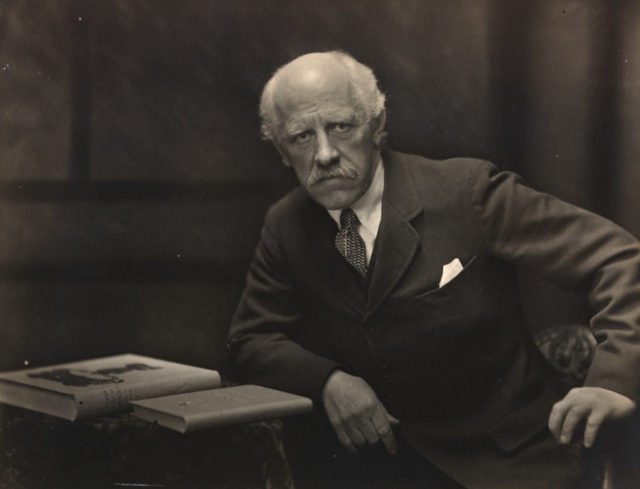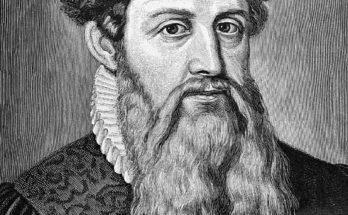Quick Facts
| Net Worth | Not Known |
| Salary | Not Known |
| Height | Not Known |
| Date of Birth | Not Known |
| Profession | History |
Expeditions in the Arctic and Antarctica were largely redefined by a Norwegian explorer and scientist who introduced new techniques of polar travels, designed and made new clothing items for explorers, as well as recorded several discoveries. The Norwegian man to whom all these are credited is Fridtjof Wedel-Jarlsberg Nansen who is popularly known as Fridtjof Nansen. Not only was Fridtjof’s life eventful; he was severally recognized and encouraged for the contributions he made towards the advancement of humanity especially as it concerns science, expeditions, and the discoveries he recorded thereof.
Fridtjof Nansen is long gone, but he is still highly spoken of today. Thanks to the legacies he left while he lived. Learn interesting things about him from his birth to his career and what led to his death.
Facts About Fridtjof Nansen, The Famous Norwegian Explorer
1. Birth and Early Life
Fridtjof Nansen was born in Aker, Norway on the 10th of October 1861 to Baldur Fridtjof Nansen and Adelaide Johanne Thekla Isidore Bølling Wedel-Jarlsberg (Baldur’s second wife). He was born as one of their three children but sadly, the family’s eldest child died at birth leaving just Fridtjof and one other.
While growing up in Store Frøen’s rural surroundings, Fridtjof spent his summers swimming and fishing, the autumn was for roaming and hunting forest games while skiing was an exclusive for winter. Skiing took the better part of him and he got to a point where he could ski 50 miles in a single day. At the age of 18, Nansen broke the 1.6 km (one-mile) skating record and at 19, he won the national cross-country skiing championship, a feat he repeated 11 times more.
2. His Education and First Expedition
In the year 1881, Fridtjof Nansen enrolled at Royal Frederick University in Christiania and began studying zoology. He opted for the course because he believed it would offer him a life “in the open air.”
The following year, Professor Robert Collett of the university’s department made a proposition to him about taking a sea voyage to study arctic zoology to which Nansen was delighted about. On the 11th of March 1882, he set off from Iceland and embarked on his first voyage with Captain Axel Krefting (commander of the sealer Viking) and for the next 5 months, Nansen and his crew were out exploring the wonders of Greenland.
In this expedition, he was able to prove with water samples that sea ice formed on the surface of the water rather than beneath it as previously assumed. He also proved that the Gulf stream flows beneath a cold layer of surface water.
When the expedition ended in early August after they sailed back into Norwegian waters, Nansen opted not to resume formal studies at the university. Instead, he accepted to be a curator in the zoological department of the Bergen Museum as recommended by Professor Robert Collett.
3. What are Fridtjof Nansen’s Scientific Findings and Papers?
In the 6 years Nansen spent at the Bergen Museum, he devoted it to scientific research studying alongside prominent people of the time like Gerhard Armauer Hansen who discovered leprosy bacillus and Daniel Cornelius Danielssen, the museum’s director who turned the museum into a center for science and education.
While working at the museum, Nansen studied the central nervous system of lower marine creatures, an area where next to nothing was known about at that time. He later published a paper stating that “anastomoses or unions between the different ganglion cells” can’t be established with certainty. His postulation was later confirmed as factual by embryologist Wilhelm His and August Forel, a psychiatrist.
Still in the line of scientific research, Nansen’s paper titled The Structure and Combination of Histological Elements of the Central Nervous System was published in 1987 and this became his doctoral thesis.
4. Further Greenland Expeditions and the Fram Expedition
Being fascinated by the beauty and unexplored wonders of Greenland, Fridtjof Nansen planned to return to Greenland to push into the island’s interior. In June 1888, Nansen and his team set off from Iceland opting to explore Greenland’s sparsely-inhabited east coast en route the west. This was contrary to what was the norm as every previous attempt to explore Greenland had been from the west to the east and not vice versa. However, Fridtjof being a man of uncommon capabilities decided to defy the norm and he successfully did so.
In the course of this expedition, they survived temperatures as low as -49 degrees Fahrenheit and traveled 2,500 miles on sleds and skis. In October of the same year, they arrived an Eskimo village on the west coast of Greenland. Thus, Nansen and his team became the first explorers to traverse Greenland in the history of the regions’ expeditions.
Another notable expedition Fridtjof Nansen embarked upon was his expedition of the North Pole termed Fram expedition. He contracted naval engineer Colin Archer to design and build a ship for this purpose to which Colin didn’t disappoint. The ship was named Fram.
On 24th June 1893, Fram left Christiania with cheers from well-wishers. It was in the course of this voyage that Nansen met British explorer Frederick Jackson near Cape Flora on 17th June 1896. Amidst several difficulties the voyage faced, it finally returned to Christiania in August 1896.
5. Fridtjof Nansen’s Marriage: Wife and Kids
While Fridtjof Nansen lived, his life wasn’t entirely about expeditions. He did get married and it was to Eva Sars, the daughter of a zoology professor, Michael Sars. The two had met previously at the skiing resort of Frognerseteren. Just like her husband, Eva was also an outdoor person; she was an accomplished skier and aside from skiing, she was also a celebrated singer. The two got married on the 6th of September 1889 barely a month after they got engaged.
In the course of their marriage, the couple had 5 children of whom the youngest is Odd Nansen (6 December 1901). Odd grew to become an author, architect, and also a humanitarian. He founded The United Nations Children’s Fund (UNICEF). On 27th June 1973, he joined his ancestors at the age of 71.
6. Fridtjof Nansen’s Awards and Recognitions
In his lifetime, Fridtjof Nansen was recognized for achieving several feats and even at death, he is still celebrated. He won the Nobel Peace Prize for 1922 in recognition of his humanitarian works in helping Russian refugees, prisoners of war, and refugees in Asia Minor and Thrace. He donated his prize money to international relief efforts.
Other notable awards and recognitions of his are Order of St. Olav, Order of the Dannebrog, Legion of Honor, Order of St. Stanislaus, Cullum Geographical Medal, Vega Medal, and Constantine Medal.
7. How The Famous Norwegian Explorer Died
Fridtjof Nansen died of a heart attack on the 13th of May 1930. He was given a state funeral that was non-religious with no speeches but just music. After his cremation, his ashes were laid under a tree in Polhøgda.
Also Read: Top 10 Richest People in the world with full biography and details.




